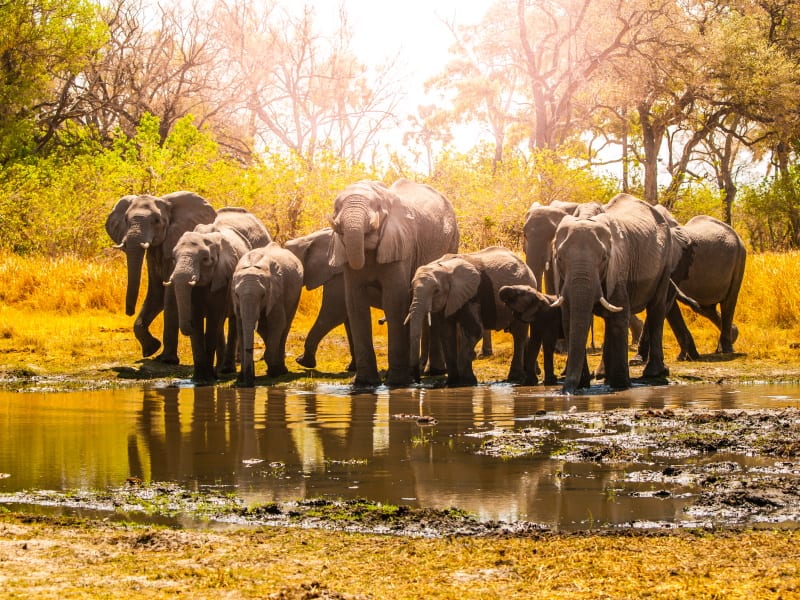
Nyerere National Park
Nyerere National Park, formerly known as Selous Game Reserve, is one of Tanzania’s largest and most remote wildlife areas. Covering over 30,000 square kilometers, this UNESCO World Heritage site is known for its pristine wilderness, unspoiled landscapes, and abundant wildlife. The park is a haven for safari enthusiasts seeking an authentic and less-crowded experience, offering opportunities for game drives, boat safaris, walking safaris, and fly-camping in the heart of nature.
Wildlife
Nyerere National Park is home to an extraordinary array of wildlife, including the Big Five: lion, leopard, elephant, buffalo, and rhino. The park boasts one of the largest populations of elephants in Africa and is renowned for its riverine wildlife, such as hippos, crocodiles, and antelopes. The park also supports diverse wildlife species like zebras, giraffes, wild dogs, and various primates, making it a perfect destination for wildlife lovers and photographers.
Birds
With over 400 species of birds recorded, Nyerere National Park is a prime location for birdwatching. The park’s wetlands, rivers, and forests host a variety of waterfowl, including African spoonbills, marabou storks, and pelicans. Raptors like the bateleur eagle and fish eagles are also commonly seen, as well as colorful species like the lilac-breasted roller and yellow-billed stork. Bird enthusiasts will find plenty to explore in the park's diverse habitats.
Best Time to Visit
The best time to visit Nyerere National Park is during the dry season from June to October, when wildlife congregates around the park’s water sources, making it easier to spot animals. This period is ideal for game drives and walking safaris, as the weather is warm and sunny. The wet season (November to May) brings lush green landscapes and fewer tourists, offering a quieter experience, especially for birdwatching.
Weather & Climate
Nyerere National Park experiences a tropical climate with distinct wet and dry seasons. The dry season (June to October) brings warm, sunny days, with temperatures ranging from 25°C to 30°C (77°F to 86°F), while nights can be cooler. The wet season (November to May) sees frequent rains, particularly from March to May, which make the park’s roads muddy but also provide a lush, vibrant landscape. The wet season is ideal for birdwatching, as many migratory species arrive during this time.
